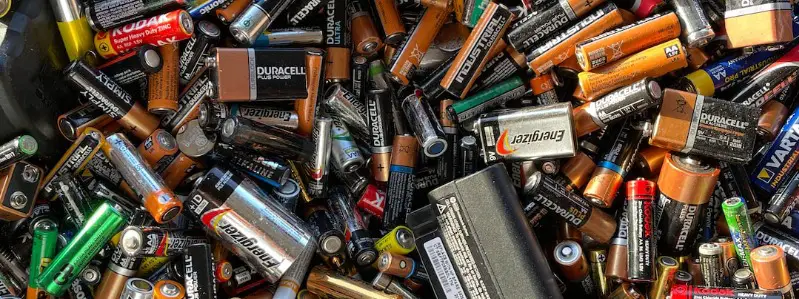How does a battery produce electricity?
Table of Contents
A simple explanation of the way the batteries that we use in our laptop computers, mobile phones, and electronic toys work.

With some understanding of oxidation and reduction reactions and of electrochemistry, we can appreciate how the batteries that we use every day produce electricity. Batteries contain chemicals, some of them hazardous, which is why we should be careful to recycle them.
Electron Flow
The chemicals in the battery react together in a redox reaction to produce electrons. These electrons are made available so that when a circuit is attached to both terminals of the battery, electricity will flow. Our question needs to be: what types of reactions produce electrons and how are they contained in a way that will make them useful?
Separate Compartments
A battery or cell is made up of pairs of compartments. The compartments are kept apart from each other but there is an electrical connection between them. At one electrode (the anode) an oxidation reaction can occur and electrons made available. This will not happen unless the electrode can take the electrons by pumping them through the circuit. At the other electrode (the cathode) a reduction reaction can occur if free electrons are available. These free electrons can come from the anode to the cathode through the electrical circuit.
Simple Experiment
In the lab, a simple experiment can be set up to demonstrate what is going on. An electrode is placed in a beaker containing a solution of silver nitrate and a piece of copper metal is used as an electrode in a beaker containing copper nitrate. The two beakers are connected with a “salt bridge” which can be a piece of filter paper soaked in another solution. When the two electrodes are connected via a bulb, the bulb lights up, the copper electrode is eaten away and the other electrode becomes covered with silver.
Explanation
What is happening? Well, at the copper electrode the copper is oxidized to copper ions, and electrons are released into the circuit. The electrons are taken to the other electrode where they are taken up by silver ions in the solution to make silver metal. This is a very simple cell and other reactions are used in other types of cells.
Lead-Acid Batteries in Cars
The chemicals used in batteries depend on the purpose of the battery and the size required for the purpose. Car batteries contain sulphuric acid as the electrolyte in connected compartments with electrodes of lead and lead dioxide in different compartments. The lead combines with the sulfate ions in the acid to form lead sulfate and an electron is released to the circuit. At the other electrode, the electron is used by the lead dioxide in a reaction with the hydrogen and sulfate ions in the acid to form lead sulfate and water. This reaction is reversible, so applying an electric current to the battery will recharge it.
Different Combinations
In solid batteries, the electrolyte is a paste surrounding the electrodes which react until there is no more electrolyte in contact with the electrodes. Each reaction pair produces a fixed voltage, so differing electrodes, and electrolytes can be used to produce different voltages. Also, some reactions produce electrons quickly, for example, batteries based on lithium and lithium chloride are used for digital cameras because they need to provide power surges to charge the flash. Other reactions are used because they have a good power-to-weight ratio and so are useful in laptop computers and space applications.
Future
The future of batteries and cells looks interesting. There are more and more applications in which portable electricity supplies are necessary and new technologies are being developed in the search for these sources.
